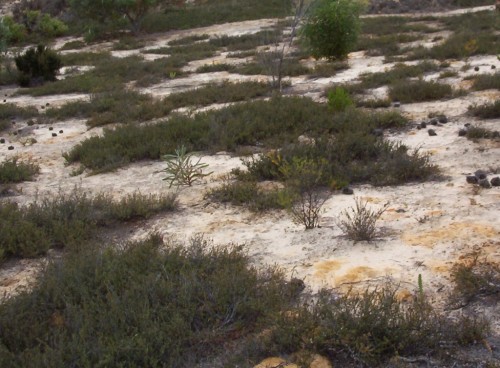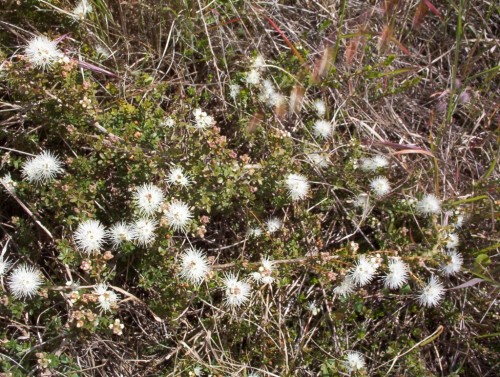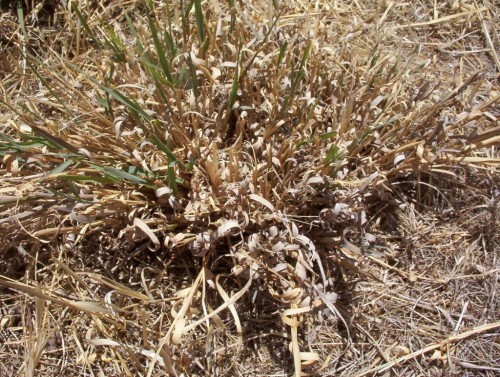More On Kunzea Pomifera (Muntries)
Kunzea pomifera (Muntries) In The Scrub
The photo shows some of the Kunzea pomifera (Muntries), that grow in this area. There were acres of the plants. The green patches on the ground are patches of Muntries. Very few weeds grow in the patches, just the occasional grasses. There were still berries on the plants and they were sweet to eat. I was surprised that the birds had not got to them all.
Kunzea pomifera (Muntries) As Bush Tucker
A few weeks ago the local green grocer had a plate of Muntries for customers to sample. They had small punnets of the berries (like those in which strawberries are packed and sold) to sell. This is the first time I had seen them in the fresh fruit market. The berries were quite large compared to the ones I had picked out bush. I know some selecting had been done to find plants yielding larger fruits. The problem is that the sweet apple-like flavour was missing completely. I was not impressed with the larger fruit as they had a floury texture.
Why is it that people are content with a loss of flavour for the sake of larger fruit and therefore the economic advantages associated with handling? The same thing has been happening to tomatoes for years. It was certainly doing a diservice to what is a delicious small fruit.
There is another article I have written about Muntries here.
Chloris truncata (Windmill Grass)
After I decided to not water a patch until it became unacceptable as a lawn to test the time between waterings, we had 3.5 mm of rain. This was three and a half weeks between waterings and was almost at the stage of considering it to be in need of a watering. As a general rule I would say that 3 weekly intervals would keep a reasonable greenness about the grass. It is looking a bit tatty at the moment as it hasn’t been trimmed since late spring. We have also had many days above 35C and at least ten days above 40C.
I certainly think it is worth persevering with this grass in low rainfall areas, especially in areas where it occurs naturally.
Olearia passerinoides (Daisy Bush)
This plant is native to the district and is drought and lime tolerant. They are shrubs to about 3 metres tall and 2 metres wide. Not much study has been done on Olearias and their cultivation. The dryland plants need to be pruned to prevent the flowers appearing on the whispy ends of foliage. New growth appears low down in the bush and pruning can be done at these points to force out more dense foliage and create a tidier bush.
Daisy bushes attract butterflies and the birds that chase them. The birds in our yard use the bushes as staging posts to come down to the bird baths.




